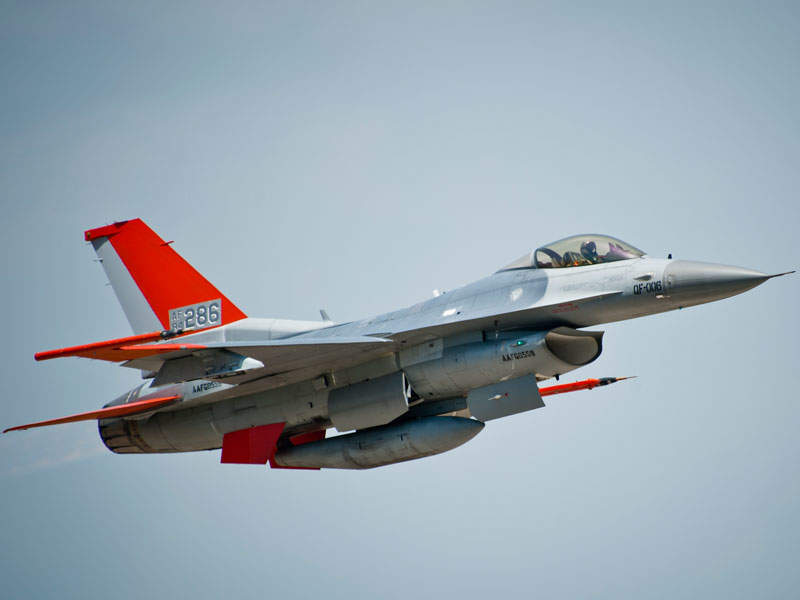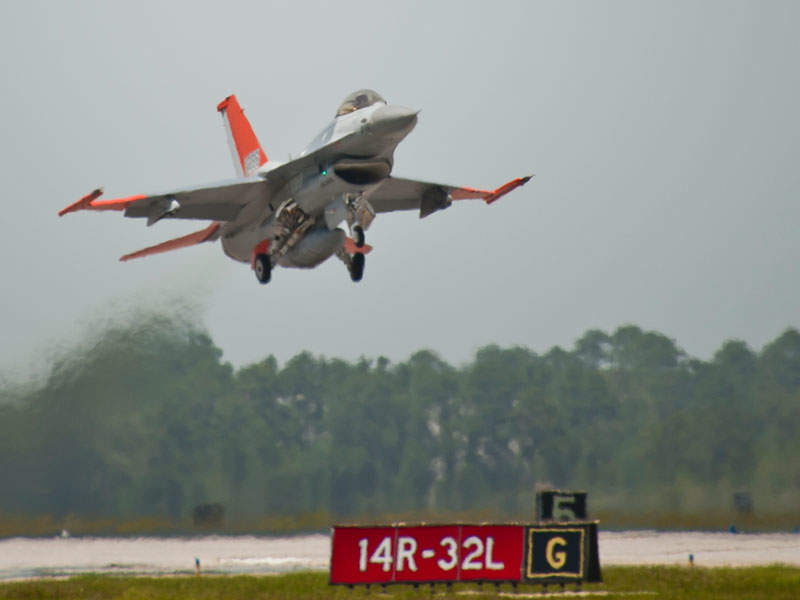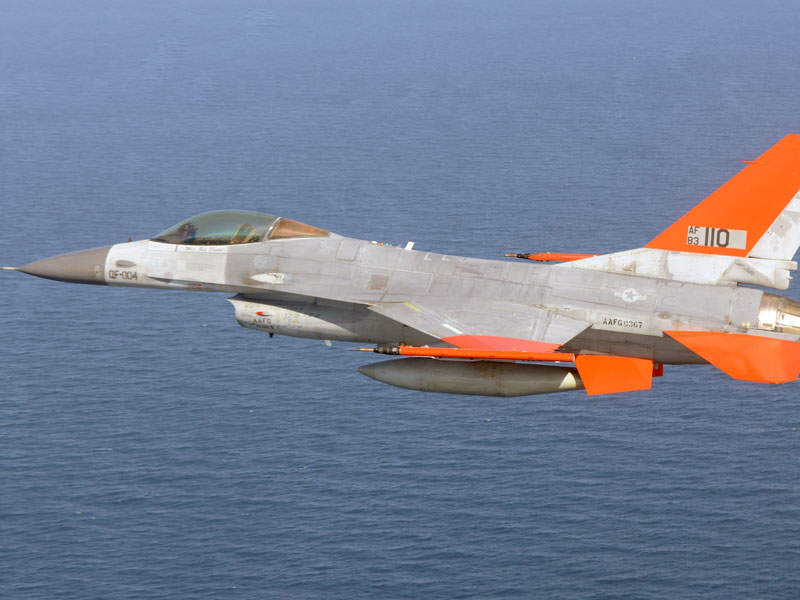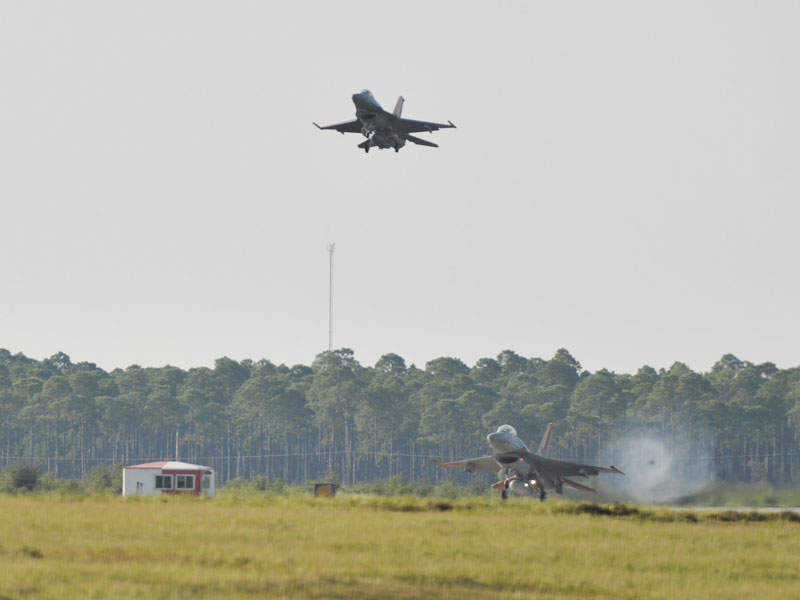The QF-16 full-scale aerial target (FSAT) was developed by Boeing for the US Air Force (USAF). It is a modified platform of the ageing F-16 aircraft, retired from the service of the USAF. The FSAT enables the US war fighters to evaluate newly developed weapons and tactics.
The QF-16 will replace the current QF-4 FSAT fleet and will act as a fourth-generation airborne target representing today’s airborne threats. It will also support the evaluation of fielded air-to-air missile (AAM) capabilities, while offering live missile training for combat air crews.
QF-16 orders and deliveries
Boeing received a $69.7m-worth multi-year contract from the USAF for the initial engineering, manufacturing and development (EMD) of up to 126 QF-16 FSATs, in March 2010.
The first QF-16 was handed over to the 82nd Aerial Targets Squadron (82nd ATRS) at the Tyndall Air Force Base (Tyndall AFB) in November 2012 for operational and developmental testing.
Boeing delivered the first production QF-16 FSAT to the 82nd ATRS at Tyndall AFB in March 2015. The 82nd ATRS received a total of 11 QF-16 aircraft by March this year.
Boeing received a $28.5m contract to convert 25 retired F-16 fighters into QF-16 FSATs, in March 2015. It was further awarded a $34.39m modification contract in March for the delivery of 30 QF-16 FSATs and associated drone-peculiar equipment.
The 82nd ATRS currently deploys the QF-16 for live-fire tests. The FSAT aircraft achieved initial operational capability (IOC) in September. Six QF-16 FSATs are currently being tested at Holloman Air Force Base.
QF-16 FSAT evaluation and testing
The first manned flight of the QF-16 took place at the Cecil Field in May 2012, while the maiden unmanned flight was conducted by Boeing and the USAF at Tyndall AFB, in September 2013. The USAF conducted 99 QF-16 developmental and operational test flights during the initial operational test and evaluation (IOT&E) phase.
The IOT&E phase involved the demonstration of key performance parameter (KPP) profile with the target control systems at Tyndall AFB and White Sands Mission Range. The mission profile covered a number of flight characteristics, including auto take-off and landing, simulated manoeuvres and supersonic flight without a pilot in the cockpit.
The QF-16 also performed countermeasures and electronic attack missions using KPP-required mission pods and demonstrated the flight termination system (FTS) and vector scoring system (VSS). The IOT&E phase was concluded in September 2014 and the IOT&E report was submitted to the US Department of Defense (DoD) in January 2015.
Design and features of QF-16
The QF-16 features a modified F-16 airframe integrating a universal remote auto pilot, auto-throttle, and peculiar support equipment with improved fault-isolation capabilities. It also features visual augmentation system (VAS), FTS, command telemetry system (CTS), VSS, and payload control system (PCS).
The eight active wing stations with pre-wired surplus payload discrete are based on modular payload design. The aircraft also houses Gulf Range Drone Control System (GRDCS) data link, F-16 chaff and flares, electronic attack pods and radar jamming pods.
The test missile launched against the target obtains the co-ordinates from the ground control station, while the QF-16 validates the engagement of those co-ordinates and sends the information including the distance and speed of the missile to ground station for determining the success of the mission.
Engine and performance
The QF-16 is powered by a Pratt & Whitney F100-PW-200/220/229 or General Electric F110-GE-100/129 afterburning turbofan engines. The power-plant enables the aircraft to attain supersonic speeds.
The FSAT retains the full capabilities including speed and roll of the F-16 aircraft. It is capable of producing forces as high as nine times the normal gravitational force during manoeuvres.







